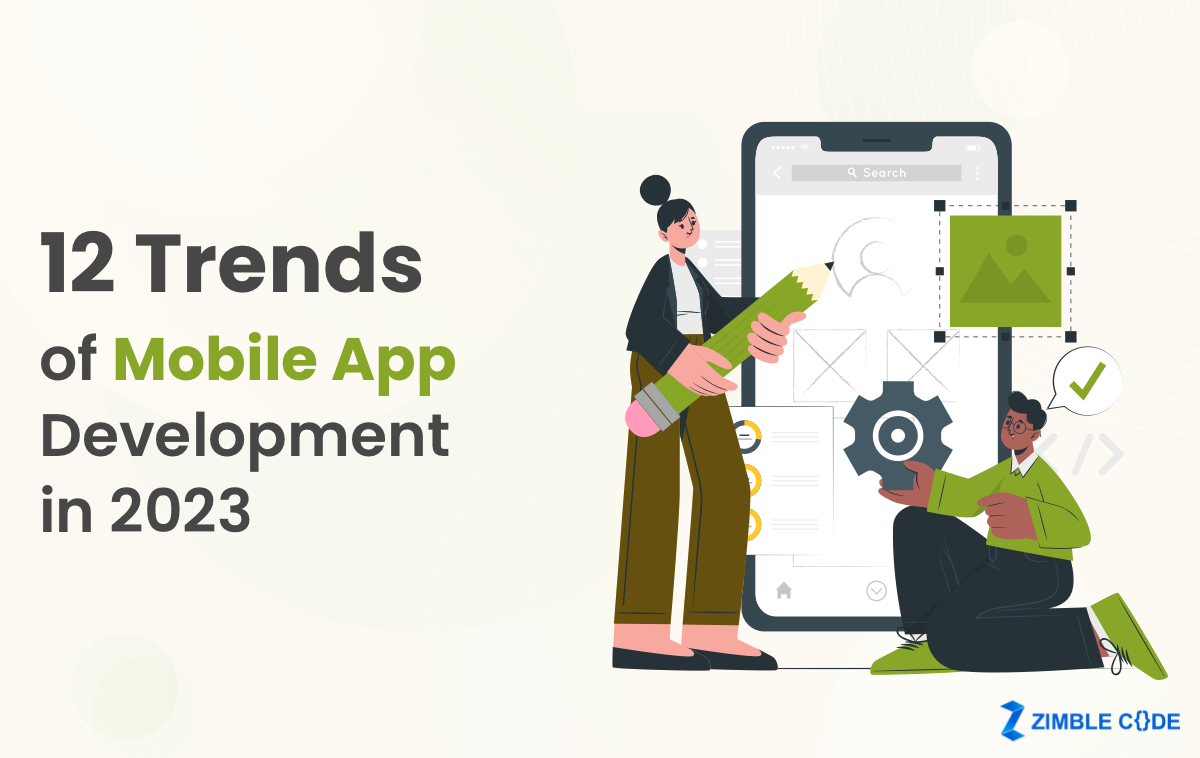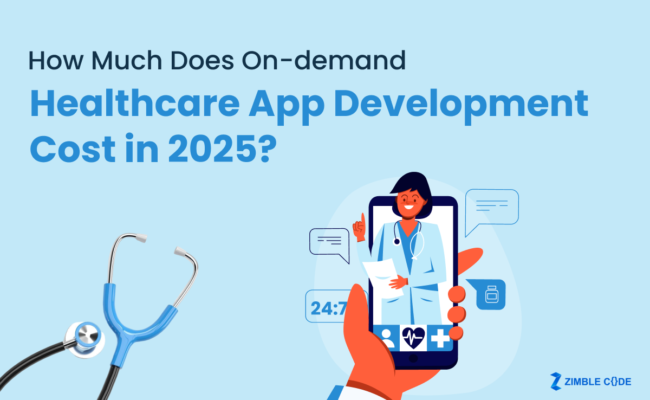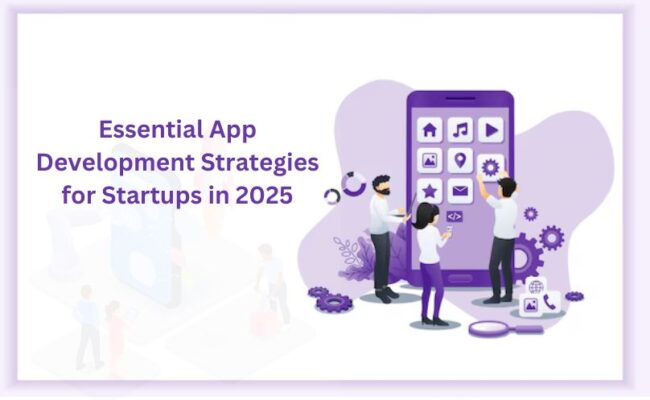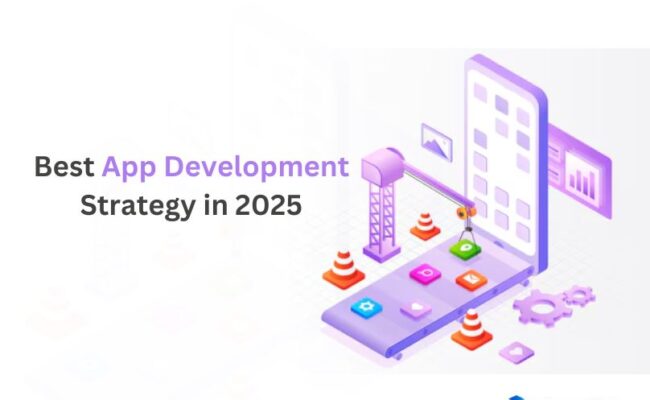Undoubtedly, we all are a part of the mobile-first age. In recent years, there has been significant growth in the use of mobile apps. Since mobile internet consumption is inversely proportional to desktop internet usage, roughly 90% of mobile internet usage is spent on applications. This figure emphasizes the need for businesses to hire top mobile app development companies to supercharge their apps.
Do you know – Why? To deliver improved user experience and deal with challenging market competition.
But what is ahead for mobile application development in the future year as the mobile app industry continues to grow significantly in 2023?
This blog will discuss the top mobile app development trends you can utilize in 2023.
12 Trends of Mobile App Development in 2023
Knowing the newest mobile app development trends might help you pivot when customer requirements and competitive pressures shift abruptly. Time to get started!
1.5G:
5G networks will meet consumer demand for a robust mobile network with faster performance, faster data transfer, and reduced latency. Mobile app developers may use 5G to increase app functionality and incorporate new features such as realistic augmented reality (AR) and virtual reality (VR) experiences, enhanced live streaming, and cloud capabilities.
2.IoT and Cloud:
As firms attempt to build seamless links between smart equipment and mobile applications, the need for mobile app development services is increasing in manufacturing, healthcare, and retail. The IoT and the cloud provide several advantages, including lower operating costs, higher efficiency, and enhanced access to other platforms via APIs. Manufacturers, for example, employ IoT mobile apps to evaluate the efficiency of equipment or offsite work areas.
3.Machine Learning and AI:
For smooth user experiences, real-time data gathering and user behavior analytics will dictate how applications customize search, chatbot interactions, and app authentication. ML may employ analytics to personalize news feeds and provide AI-powered chatbots that understand a customer’s history and communication interests. You can also identify fraud, suspicious activity, and potential data breaches with the help of a top mobile app development company in the USA.
4.Wearables:
As the market for wearable devices expands, more digital solutions will be required to support the electronics. Every type of wearable, from smartwatches to bands, needs full-fledged software. They assist the owner in gathering data, measuring and analyzing vital signs, generating sophisticated statistics, and more. Following this trend, mobile app developers must build user-friendly, responsive, and engaging apps.
5.AR/VR:
AR/VR advancements are driving the change of smartphone apps for gaming, leisure, travel, and live-streaming. Customers expect profound, interactive experiences, and AR/VR technology allows them to try on items, see how a new sofa might appear in their living room, or imagine themselves on their dream beach trip. For mobile app developers, the issue is to create experiences that can be accessed and appreciated on older mobile devices.
6.Cross-Platform Development:
Cross-platform development refers to producing a mobile app with a single codebase that can operate on any iOS or Android platform. Coding the app once and launching it to different platforms helps save time and resources. Further, it allows you to reach more consumers with an app that looks and feels the same across devices.
7.Low-code development:
Low-code app development necessitates minimal to no coding knowledge to construct a mobile app. Alternatively, frameworks with user-friendly tools like drag-and-drop, editors, and simple APIs are used by programmers to build the app. Low-code app development can save time and money and can be done by an individual who needs coding abilities. This enables your mobile app development company in New York to be more creative, enhance productivity, and get products to market faster.
8.Banking on the Go:
When it comes to FinTech, the first thing that comes to mind is banking. Almost every app, such as Apple Pay, enables safe, contactless in-app payments, but mobile banking goes two steps further. Almost every financial institution offers an app for keeping assets, trading them, transmitting them to other users, and other functions. Mobile app developers should pay special attention to the outstanding security of financial solutions.
9.Biometric Identification:
Nearly every current app has fingerprint scanners or face-recognition technology. Thus, developers can include biometric authentication features in their digital applications. It will dramatically enhance your app’s usability and security and lead to higher downloads.
10.Accelerated Mobile Pages:
When it comes to websites, consumers or visitors want them to load quickly. Nobody wants to wait for information that is unavailable or delayed. Similarly, AMP technology is utilized in mobile applications to make them run quicker and load data more rapidly. It provides instant delivery to the consumer by utilizing smart Google technologies. Furthermore, AMP aids in giving consumers the greatest browsing experience possible. It is vital whether the mobile app is created on a native or hybrid platform.
11.Speech Recognition:
Voice recognition technology is one of the most popular emerging mobile app trends. It meets user needs for faster reaction times. Customers utilize vocal commands, which the gadget understands to perform a function, rather than inputting a search request. Customers may, for example, use Amazon’s Alexa mobile app to ask the AI-powered Alexa voice assistant to monitor the climate or purchase groceries.
12.Progressive Web Apps:
The next generation in mobile application development is progressive mobile or web apps. The PWA speeds up the rendering of web and mobile sites and requires less internet access. Mobile applications may be used offline and still provide up-to-date information. The advantage is that these apps use less internet or mobile data.
Conclusion
As mobile apps gain popularity, global organizations strive to give clients a unique mobile app experience. Thus, to match the dynamic market, your mobile app development team will confront the challenge of providing high-performing, seamless user experiences in 2023. You can hire a trusted agency like ZimbleCode for top-notch mobile app development in New York and thrive in this ever-changing competitive market with these fresh trends.
Frequently Asked Questions (FAQs)
Q1. On Average, How Much Does it Cost to Create An App?
Depending on what the app accomplishes, developing a mobile app can cost anywhere between $10,000 and $500,000, based on the customizations and other requirements.
Q2. What are the three Kinds of Mobile Apps?
Mobile applications are classified into three types:
- Native: An app is created for a specific platform by utilizing the platform’s native APIs.
- Hybrid: An app built with web technology yet wrapped in a native app.
- Mobile Web: An app created with web technology and distributed over a web browser.
Q3. Why do Most Mobile Applications Fail?
An app’s performance is determined by various factors, ranging from competition to marketing spending to pure chance. However, these major reasons can be dealt with by hiring a custom mobile app development company in the USA.








Leave A Comment